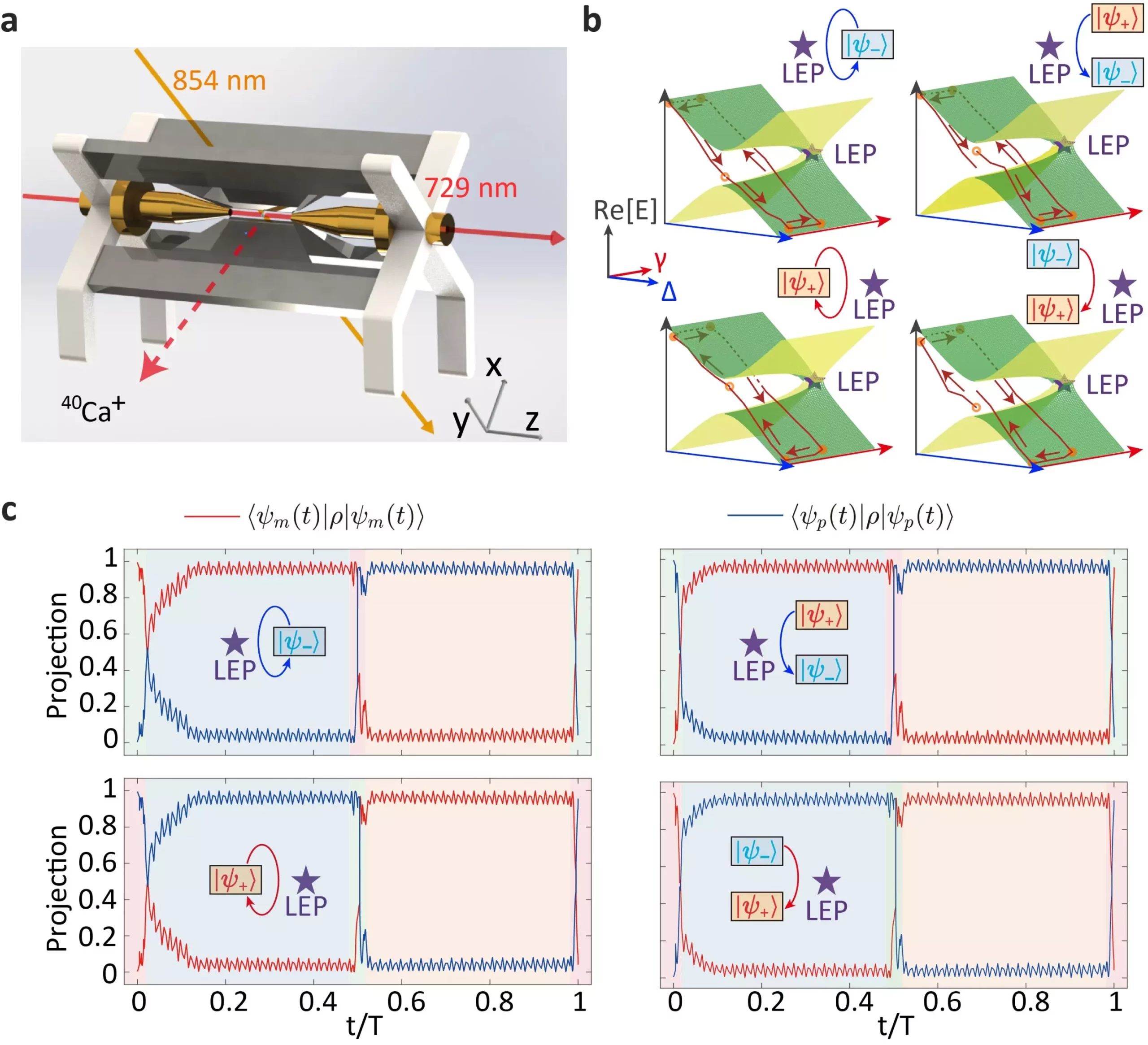In the intricate landscape of modern engineering and physics, heat engines play an undeniably pivotal role, transforming thermal energy into work. The drive for efficiency and innovation in this domain reaches new heights with the emergence of quantum heat engines (QHEs) facilitated by advanced nanotechnology. These groundbreaking systems present fascinating opportunities for understanding the principles of quantum thermodynamics, particularly as they operate within the framework of open quantum systems that engage in energy exchange with thermal baths. This exchange generates what are termed quantum jumps, indicating a significant departure from classical mechanics.
Traditional methodologies for analyzing the dynamics of quantum systems frequently employ Hamiltonian exceptional points (EPs); however, these approaches fall short when dealing with the unique behavior exhibited by QHEs. Instead, Liouvillian exceptional points (LEPs) emerge as a crucial concept that facilitates a more comprehensive understanding of the dynamics at play. LEPs possess unique properties that arise from the quantum jumps within these systems, which remain underexplored compared to their Hamiltonian counterparts. Understanding LEPs presents a fresh perspective that sheds light on the underlying physical phenomena associated with quantum processes, thus expanding the boundaries of knowledge in quantum thermodynamics.
A significant step forward in this field was marked by a recent collaborative study led by Professor Mang Feng at the Innovation Academy for Precision Measurement Science and Technology of the Chinese Academy of Sciences. Collaborating with academics from Hunan Normal University and Pennsylvania State University, the team explored the fascinating dynamics related to chiral quantum heating, cooling, and state transfer through an optically controlled ion. Their research revealed the chiral thermodynamic properties of quantum systems that engage in non-Hermitian dynamics, demonstrating how the direct interaction around closed loops—without the involvement of LEPs—affects the system’s performance as either a heat engine or a refrigerator.
One of the most compelling aspects of the team’s findings revolves around the connection between chirality and the topological landscape of Riemann surfaces. Prof. Feng’s analysis suggests that the direction of encirclement plays a critical role in achieving asymmetric mode conversion, a concept that parallels observations in classical systems yet diverges significantly from traditional perspectives dominated by exceptional points. This revelation not only deepens our comprehension of quantum thermodynamics but also opens up potential pathways for the development of more effective quantum devices.
The implications of these findings extend beyond academic curiosity; they lay the groundwork for significant advancements in various quantum technologies, including energy conversion systems and the sphere of quantum computing. By emphasizing the importance of LEPs in optimizing QHE dynamics, the study paves the way for future explorations that could revolutionize the efficiency and effectiveness of quantum systems. As researchers delve deeper into the interplay of chirality, topology, and thermodynamics, new innovations may arise, setting the stage for the next generation of quantum applications. Thus, the journey into the heart of chiral quantum heat engines continues, promising exciting developments in both fundamental research and practical technologies.

